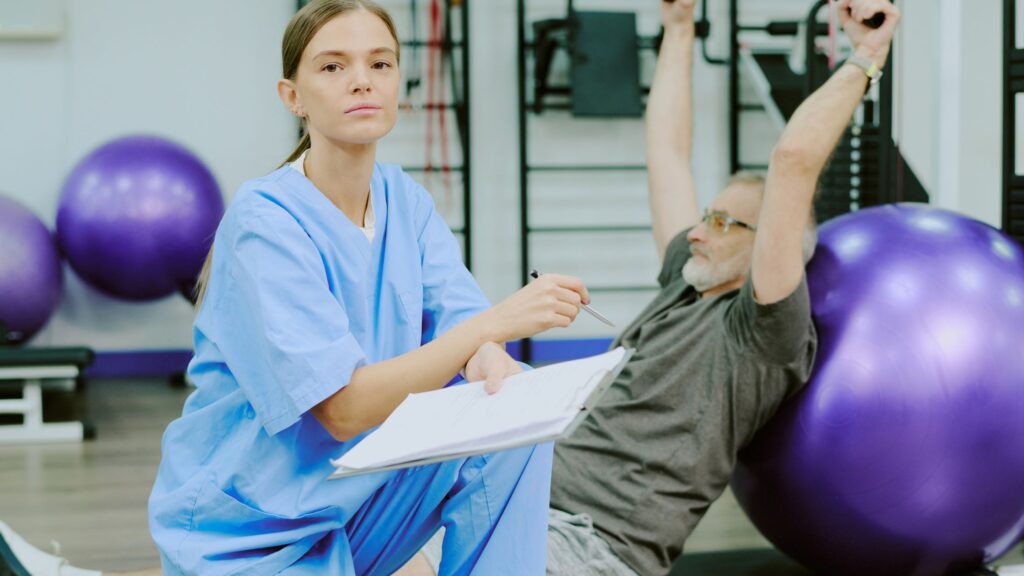Dealing with a sports injury can be challenging, whether you’re an athlete or an active individual. It can limit movement, cause pain, and disrupt your daily routine. If you’re searching for rehabilitation for a sports injury near you, understanding the role of rehabilitation in recovery is key. In this article, we’ll explain what sports injury rehabilitation involves, why it’s essential for healing, and how to choose the right rehab center for a smooth recovery. We’ll also highlight how Swift Rehabilitation offers expert care to help you recover quickly and safely.

Understanding Sports Injuries
Sports injuries can take many forms, ranging from sprains and strains to fractures and dislocations. The most commonly affected areas include muscles, tendons, ligaments, and joints, and these injuries can happen to anyone, regardless of fitness level. Some of the most common types of sports injuries include:
- Sprains: Stretching or tearing of ligaments.
- Strains: Overstretching or tearing of muscles or tendons.
- Fractures: Broken bones.
- Dislocations: Joints forced out of their normal position.
Rehabilitation focuses on addressing the root cause of the pain, speeding up recovery, and reducing the risk of future injuries. Learn more about Physical Rehabilitation Center.
Importance of Rehabilitation
Rehabilitation is a crucial part of the recovery process. It’s not just about alleviating pain but also about restoring function, strength, and mobility. Without proper rehabilitation, there’s a higher risk of re-injury or long-term problems. The key goals of rehabilitation include:
- Pain Management: Reducing the discomfort caused by the injury.
- Restoring Range of Motion: Improving flexibility and movement to regain full mobility.
- Regaining Strength: Strengthening muscles that were weakened or affected by the injury.
- Preventing Future Injuries: Addressing muscle imbalances or weaknesses that might have contributed to the injury.
A well-structured rehabilitation program is essential for athletes and individuals recovering from sports-related injuries. It ensures they can return to their activities safely, with restored performance and strength.
Choosing the Right Rehabilitation Center
When searching for rehabilitation for a sports injury, it’s important to choose a center that meets your specific needs. Consider these key factors to make an informed decision:
I. Expertise and Specialization
Look for a rehabilitation center that specializes in sports medicine. Ensure the staff has experience in treating musculoskeletal injuries and uses the best techniques to support your recovery.
II. Personalized Treatment Plans
Each injury is different. A good center will evaluate your condition and create a customized treatment plan based on your specific needs, whether you’re recovering from a mild sprain or a more severe injury like a torn ligament.
III. Experienced Professionals
Make sure the center employs licensed physical therapists, rehabilitation specialists, or sports medicine doctors with experience in treating sports-related injuries. Their expertise is crucial to your successful recovery.
IV. Advanced Equipment
Choose a facility with modern, well-maintained equipment and access to advanced therapies like ultrasound therapy, heat/cold therapy, and functional training tools to aid in your healing process.
V. Positive Reviews
Check patient reviews and testimonials to assess the center’s effectiveness and quality of care. A center with a proven track record and high ratings is more likely to provide the service you need.

Rehabilitation Techniques and Therapies
Effective rehabilitation programs use various therapies and techniques to restore function, alleviate pain, and enhance mobility. Here are some of the most common therapies used in sports injury rehabilitation:
A. Physical Therapy
Physical therapy is the foundation of rehabilitation, focusing on exercises and stretches to improve strength, flexibility, and range of motion. A physical therapist will guide you through targeted exercises that address the specific areas affected by the injury.
B. Manual Therapy
Manual therapy includes hands-on techniques where the therapist uses their hands to manipulate joints and soft tissues, helping to reduce pain and improve movement. Techniques like joint mobilizations and soft tissue massage are used to ease tension and restore mobility.
C. Aquatic Therapy
Aquatic therapy utilizes water resistance to enhance strength and mobility while reducing strain on injured muscles and joints. This type of therapy is particularly beneficial during the early stages of recovery, as the buoyancy of water minimizes stress on the body.
D. Sports-Specific Training
This therapy involves exercises that mimic the movements and actions of the sport you’re recovering from. Sports-specific training helps you regain strength, coordination, and technique, ensuring a safe and effective return to your sport.
E. Modalities
Modalities such as heat, cold, electrical stimulation, and ultrasound are commonly used to reduce pain and inflammation, promote healing, and improve tissue flexibility. These treatments complement other therapies and help speed up recovery.
Benefits of Rehabilitation
Choosing rehabilitation for sports injury offers many benefits that can lead to a faster and safer recovery. These advantages include:
- Pain Reduction: Ice, heat, and e-stim cut swelling and pain, speeding recovery.
- Restored Function & Mobility: Rehab rebuilds the range of motion so you move freely in daily life.
- Injury Prevention: Programs fix weaknesses and imbalances to lower re-injury risk.
- Strengthening Muscles: Targeted exercises restore strength and stability to protect joints.
- Mental Health Benefits: Clear goals and structure reduce stress and rebuild confidence.
Start rehab early, follow a progressive plan, and stay consistent. Pair guidance from a qualified therapist with regular check-ins so you return sooner—and stay stronger.

Conclusion
Recovering from a sports injury takes time, dedication, and the right rehabilitation approach. Whether it’s a sprained ankle or a more serious injury, finding effective rehabilitation for sports injuries near you is crucial for a full recovery. By choosing the right rehabilitation center and following a personalized plan, you can return to your active lifestyle and prevent future injuries.
For professional rehabilitation services, contact Swift Rehabilitation. Their expert therapists provide personalized care to help you recover and get back to what you love.




